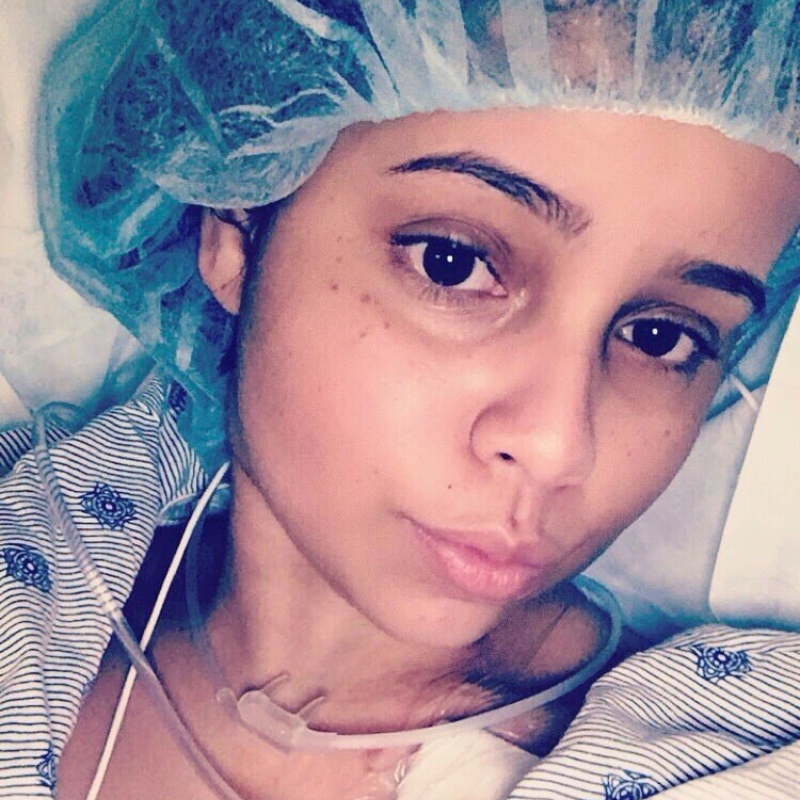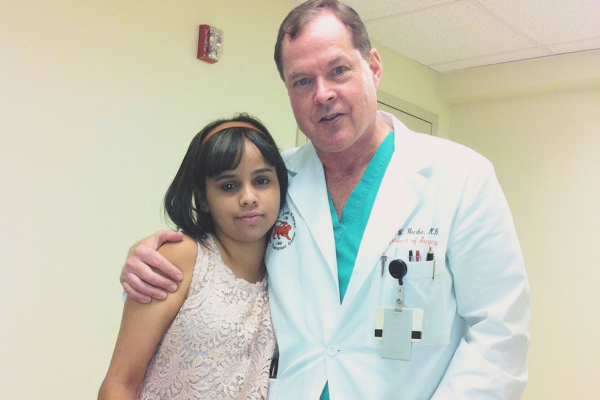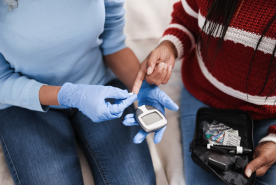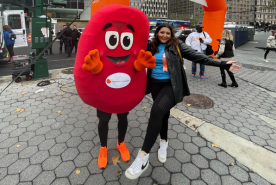November 26, 2024
Yessenia (Yessie) Gutierrez was born with polycystic kidney disease (PKD) in December 1994. This genetic condition makes cysts grow on the kidneys and can lead to kidney failure. Even though her family and doctors did everything they could, Yessie’s kidneys failed when she was just nine years old. While this was only the beginning of a challenging journey to kidney health, Yessie has always faced it with courage and a positive attitude.
A Young Start to Dialysis
Yessie had to stop attending school because she spent so much time at doctor appointments and treatments.
“Dialysis was three times a week, each session lasting three hours. My mom homeschooled me. I missed my friends and going to public school. I couldn’t eat my favorite foods or drink much water. I missed living a normal life,” Yessie said. “My mom tried to explain why I needed dialysis. I didn’t fully understand, but I accepted it, even though I was sad.”
Seeing how hard this was for Yessie, her family and doctors made sure she got mental health care along with her kidney treatments.
“I saw a psychologist and got therapy at the hospital. A kidney social worker supported me, and professionals helped me along with other young patients understand our condition and treatments,” Yessie explained. “They also taught me about kidney transplants.”
Yessie’s mom started the process of becoming a living kidney donor as soon as possible.
“She went through all the evaluations and was a good match. We were ready for surgery when a deceased donor became available,” Yessie said. “Since PKD doesn’t go away with a transplant, the doctors suggested I take the deceased donor’s kidney instead. If the disease harmed the new kidney, my mom could still donate later.”
In 2004, at just 10 years old, Yessie received her first kidney transplant.
Do you need a kidney transplant? Take ‘First Steps to Transplant,’ NKF’s free beginner's guide to kidney transplants.
Join the NKF Blog Newsletter
Get inspirational stories and kidney disease resources delivered to your inbox every month. You'll gain practical insights and expert advice to help you better understand and manage your kidney health no matter where you are on your kidney journey. Subscribe today.
Losing Her Kidney Transplant
At first, the surgery was successful.
“I started peeing right away,” Yessie said. “Once I recovered and went home, my mom made sure I drank a lot of water. I monitored my blood pressure and took medication for it. I took anti-rejection medicine every day and had frequent checkups.”
Things went well for two years. In 2006, Yessie’s lab results showed a dramatic decrease in
kidney function.
“We went to the hospital and found out I had the BK virus,” Yessie said. “There wasn’t much they could do. I lost the kidney the next day and had to go back on dialysis.”
The BK virus is common. Most people get it in childhood without symptoms. Those who do get symptoms may mistake it for the common cold. This virus usually stays inactive but can reactivate after a kidney transplant due to weakened immune systems. When active, the BK virus may harm the new kidney.
“It was really hard to start dialysis again. My mom wanted to donate, but my antibodies were too high. My body would just reject another transplant,” Yessie said. “I had to wait years for my antibody levels to go down.”
Experiencing Liver Failure

In 2013, Yessie started losing weight. She had stomach pain and struggled to eat. She was diagnosed with pancreatitis, inflammation of the liver, and learned her liver was in the process of failing. She took antibiotics and increased dialysis sessions to six days a week.
“I managed my condition for a while. But in 2016, my knees and hands swelled up. I needed surgery to reduce the puffiness,” Yessie said. “My liver was enlarged and full of scar tissue. I was put on the liver transplant list.”
By June 2017, Yessie’s liver failed. Luckily, she received a liver and kidney transplant in August 2017.
“For the first two weeks, both transplants worked well. Then my antibodies spiked, and I went into acute kidney transplant rejection. I had to go through plasmapheresis, similar to dialysis, to remove antibodies from the blood. This treatment worked,” said Yessie . “I spent two months in the hospital before I was well enough to go home.”
Yessie followed her doctors’ advice, ate well, and exercised.
“I looked healthier and felt better,” Yessie said. “In 2020, I suddenly stopped urinating. I had acute rejection again. This time I lost the kidney. Since then, I’ve been in and out of the hospital with complications. I’ve experienced pancreatitis and liver inflammation. My lung collapsed and I suffered a pulmonary embolism, a blood clot in my lungs.”
Thankfully, Yessie’s liver transplant is still going strong.
Living with kidney disease can take a toll. Connecting with others going through similar situations may help. Join an NKF Community today.
Staying Hopeful
Despite everything Yessie has been through, she’s never given up hope.
“There are so many things I can’t control, but I can control how I live and feel. I choose to stay positive and focus on my passions, like writing, advocating, and sharing my experiences with others,” Yessie said. “I choose to take care of myself and stay hopeful for a transplant.”
Yessie is also an NKF Peer mentor. She trained to help others with kidney disease by sharing her experiences and supporting them.
“Dialysis can be scary. Not having it is even scarier. All my challenges taught me to be patient and understanding,” Yessie said. “I encourage others to try and stay positive. I know it’s hard but it’s possible because we have each other. Find your community and try your best to support one another.”

















